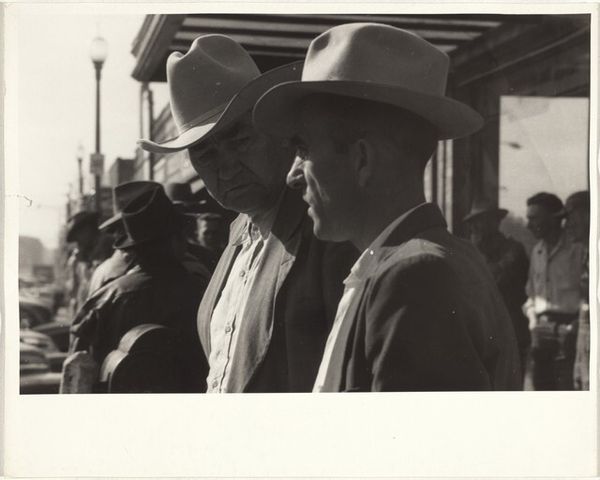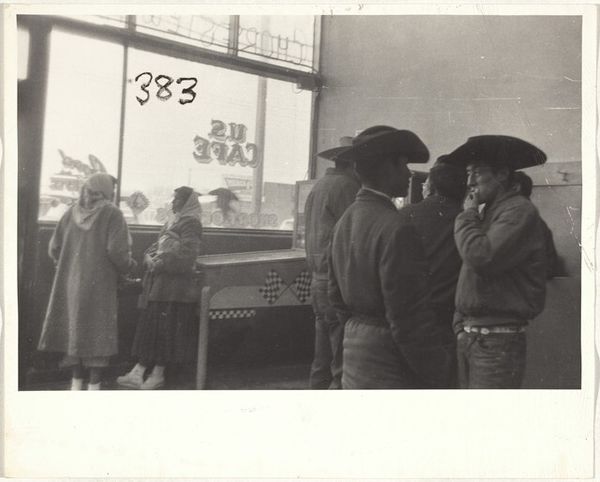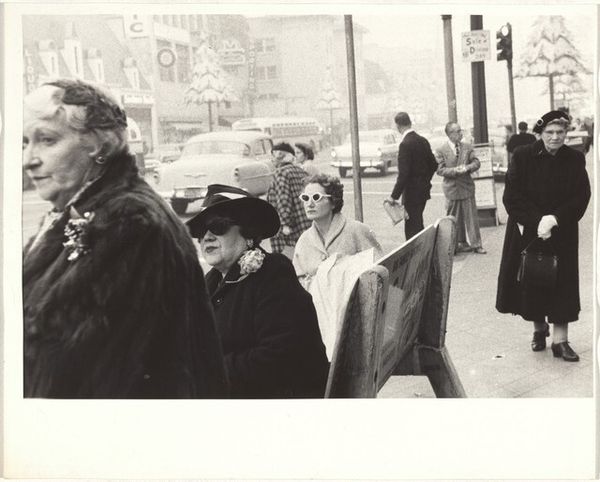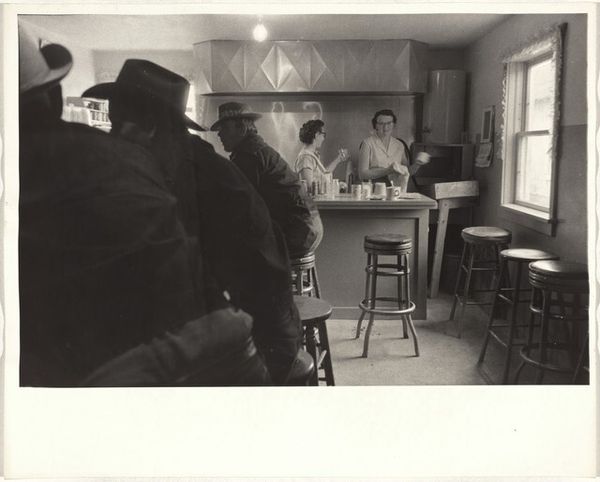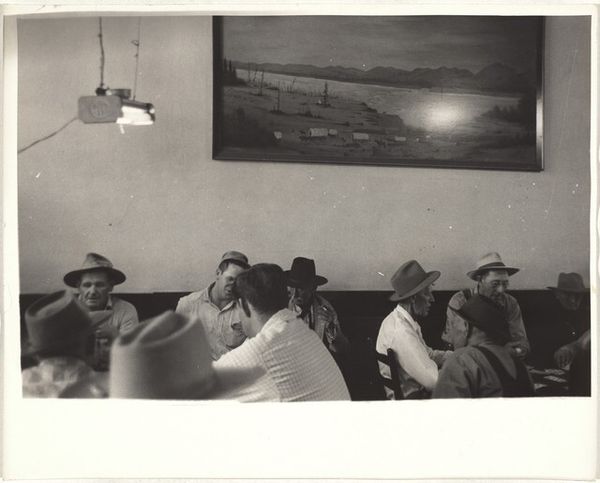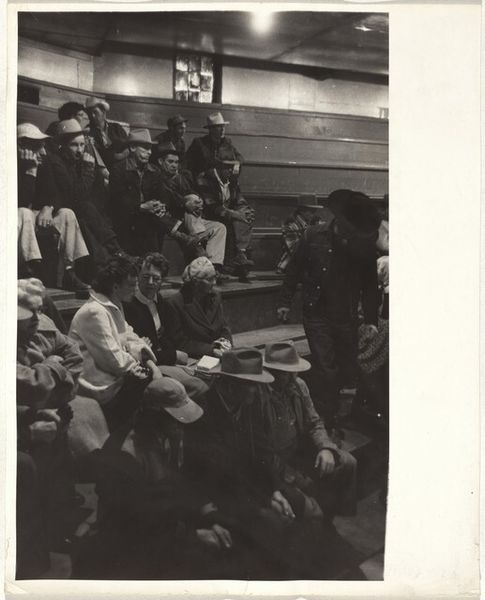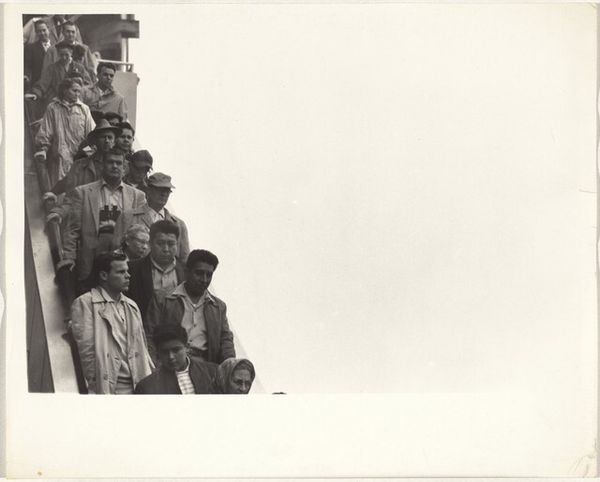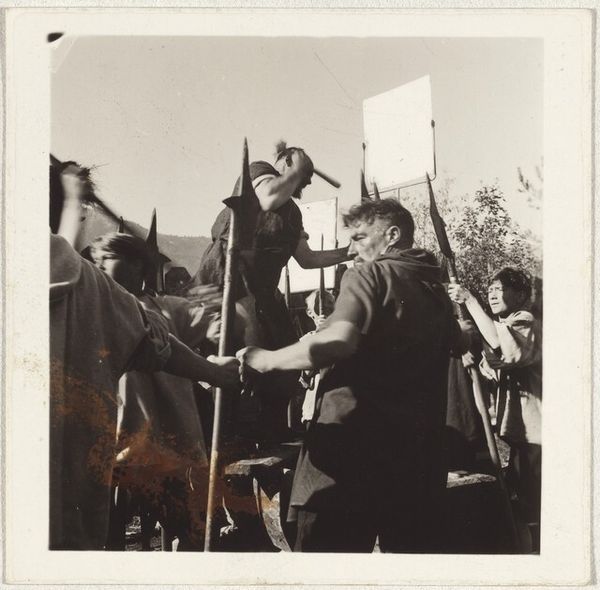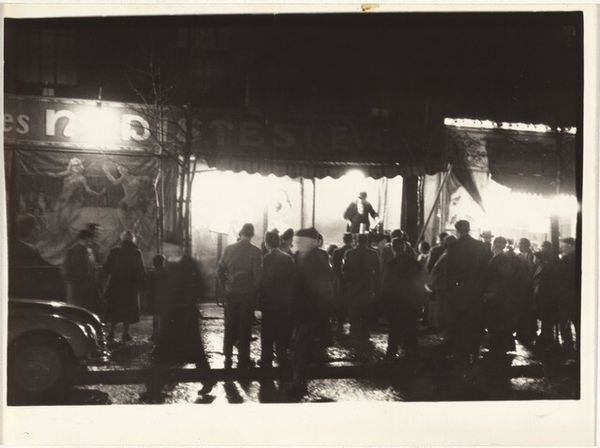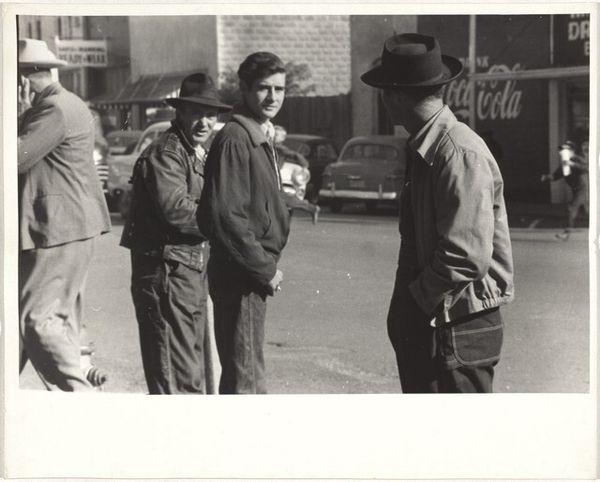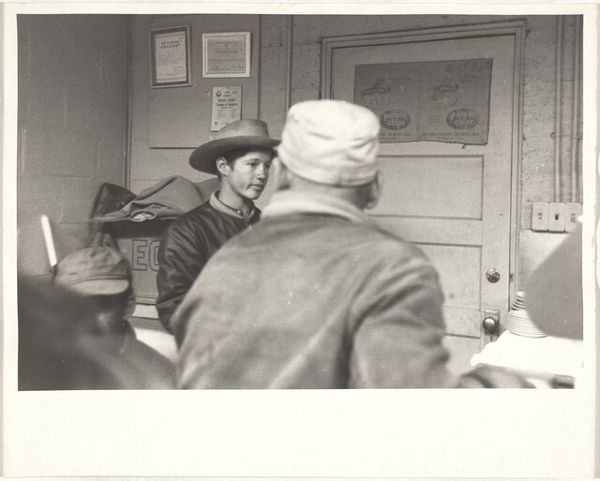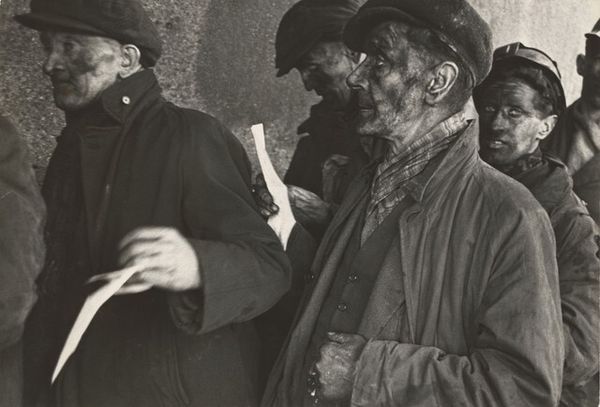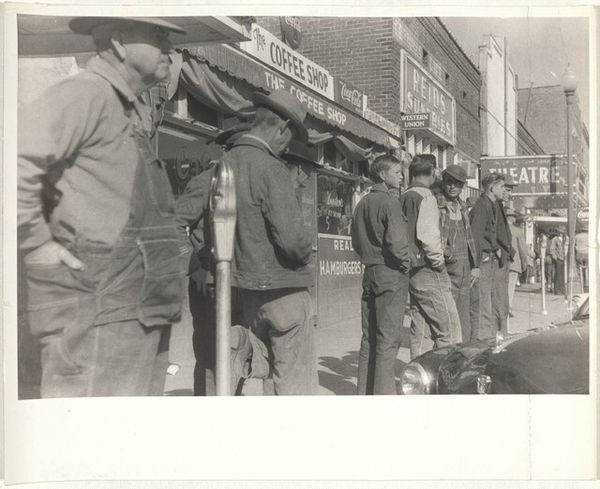
photography, gelatin-silver-print
#
outdoor photo
#
archive photography
#
street-photography
#
photography
#
historical photography
#
gelatin-silver-print
#
monochrome photography
#
monochrome
Dimensions: sheet: 20.3 x 25.2 cm (8 x 9 15/16 in.)
Copyright: National Gallery of Art: CC0 1.0
Curator: Looking at this Robert Frank gelatin silver print from 1955, entitled "Native Americans—New Mexico," I'm immediately struck by its muted, almost oppressive atmosphere. Editor: Oppressive? That's a strong word. What makes you say that? Curator: The figures are turned away, shrouded in shadow. There's a sense of being excluded, as if we're outsiders peering into a community that's deliberately keeping its distance. This resonates with the history of marginalization faced by Native communities. Editor: I see your point. Frank's work often captured a sense of American unease, didn't it? Looking at this, I think about the mid-20th century and the fraught relationship between dominant American culture and Native populations, shaped by governmental policies and societal prejudice. How do you think this image played into existing perceptions at the time? Curator: Precisely. These were the years of assimilation policies, aimed at dismantling tribal identities. The stoicism of the figures, their refusal to meet the viewer's gaze, reads as a quiet act of resistance. Their dress, the hats and scarves, speaks volumes about cultural adaptation amidst immense external pressure. There's a painful tension between tradition and forced modernization embedded here. Editor: And technically, Frank’s decision to focus on the backs of his subjects disrupts the standard portrait. The composition, cropping, and the high contrast creates this mood of inaccessibility, almost surveillance. Did it challenge the typical way Native Americans were represented photographically? Curator: Absolutely. Where earlier ethnographic photography often objectified Indigenous peoples, presenting them as anthropological specimens, Frank presents something far more nuanced and emotionally resonant. He confronts us with the reality of cultural survival within a nation still grappling with its colonial legacy. It shifts the focus from observation to implication, forcing the viewer to acknowledge their own position. Editor: It’s interesting how a single image can contain so many layers of meaning, touching on identity, resistance, and the politics of representation. This makes me want to investigate its place in contemporary exhibitions. Curator: Exactly. It pushes us to question how we consume and interpret historical narratives and challenges us to consider whose stories are amplified and whose remain unseen.
Comments
No comments
Be the first to comment and join the conversation on the ultimate creative platform.
